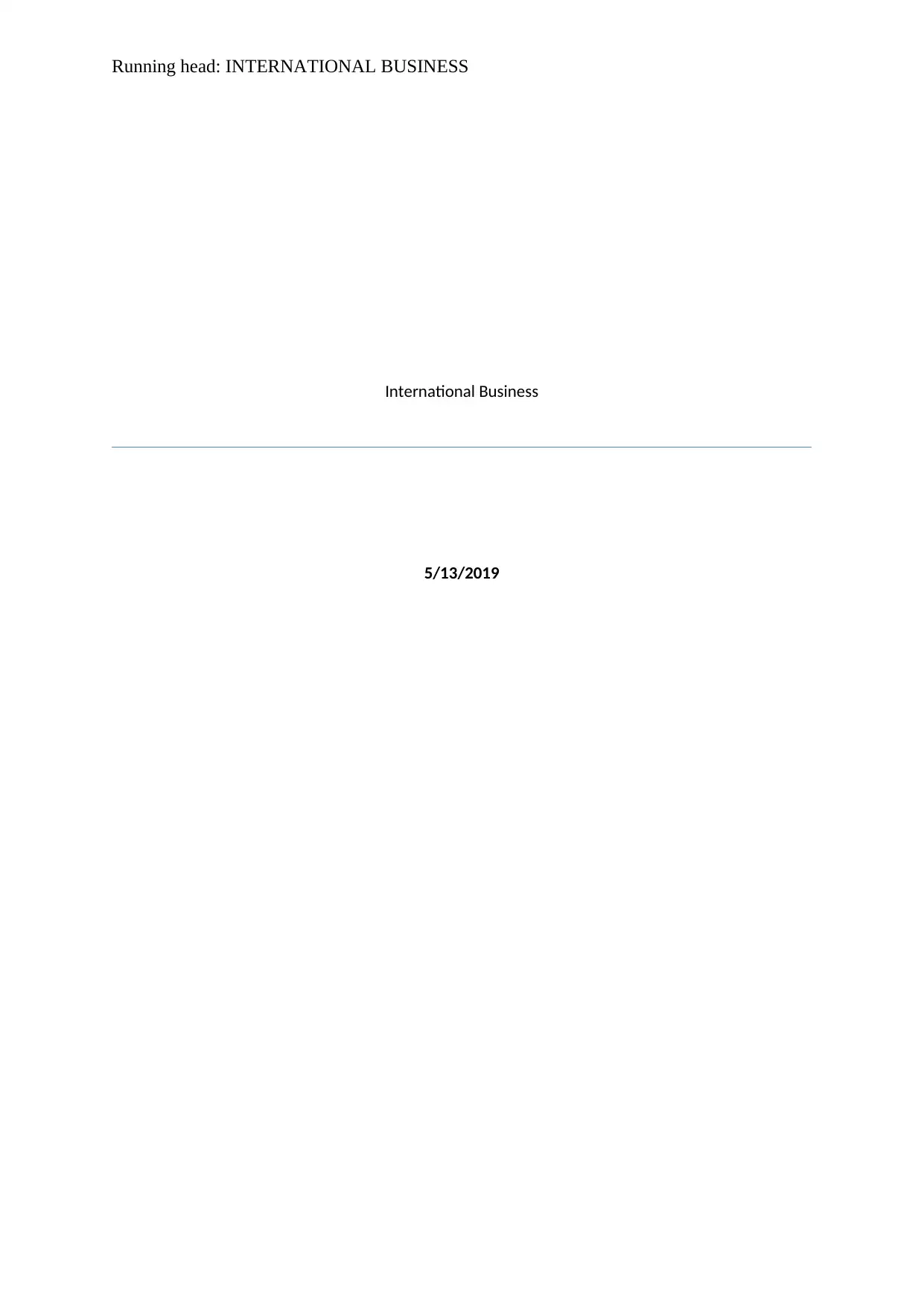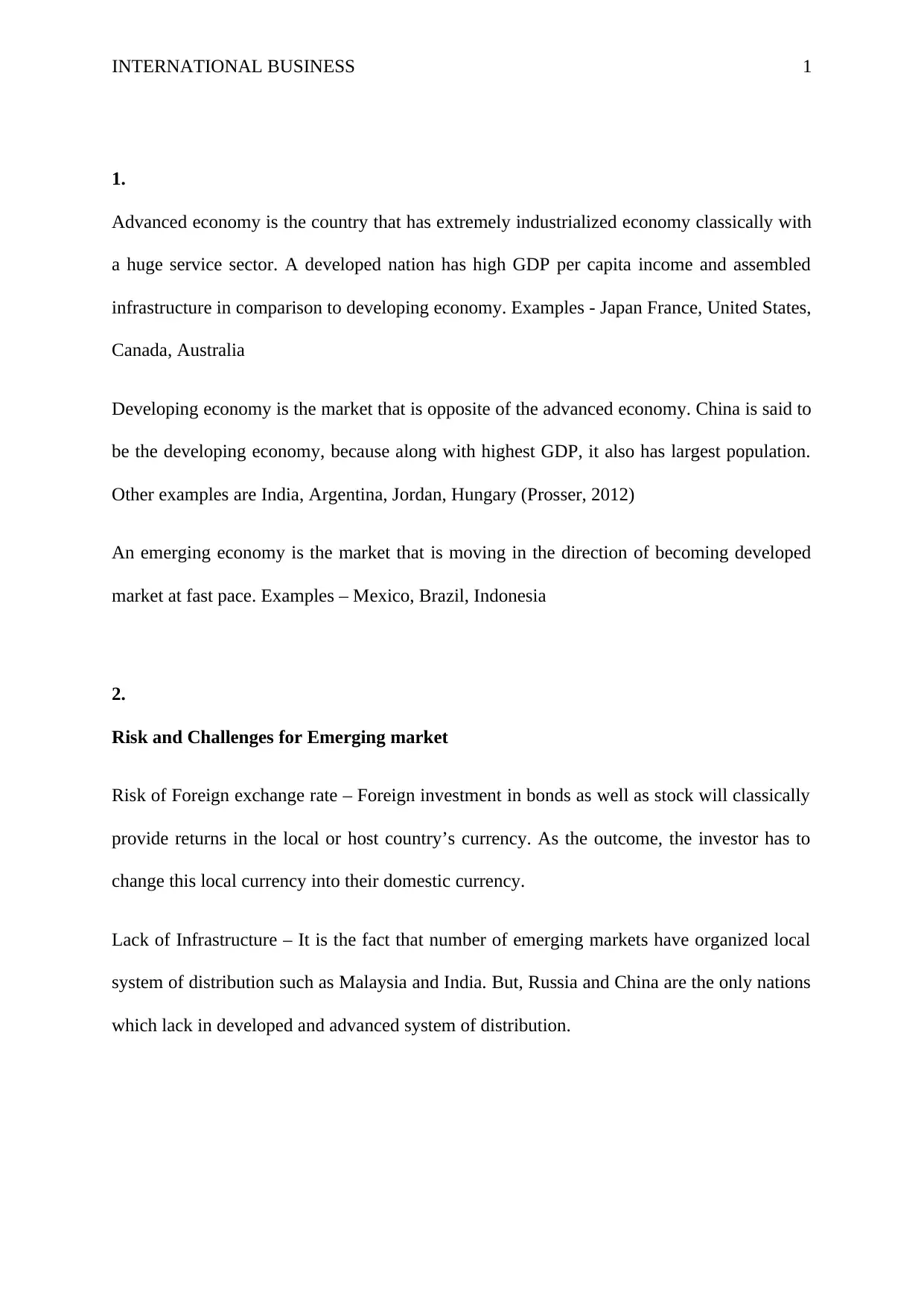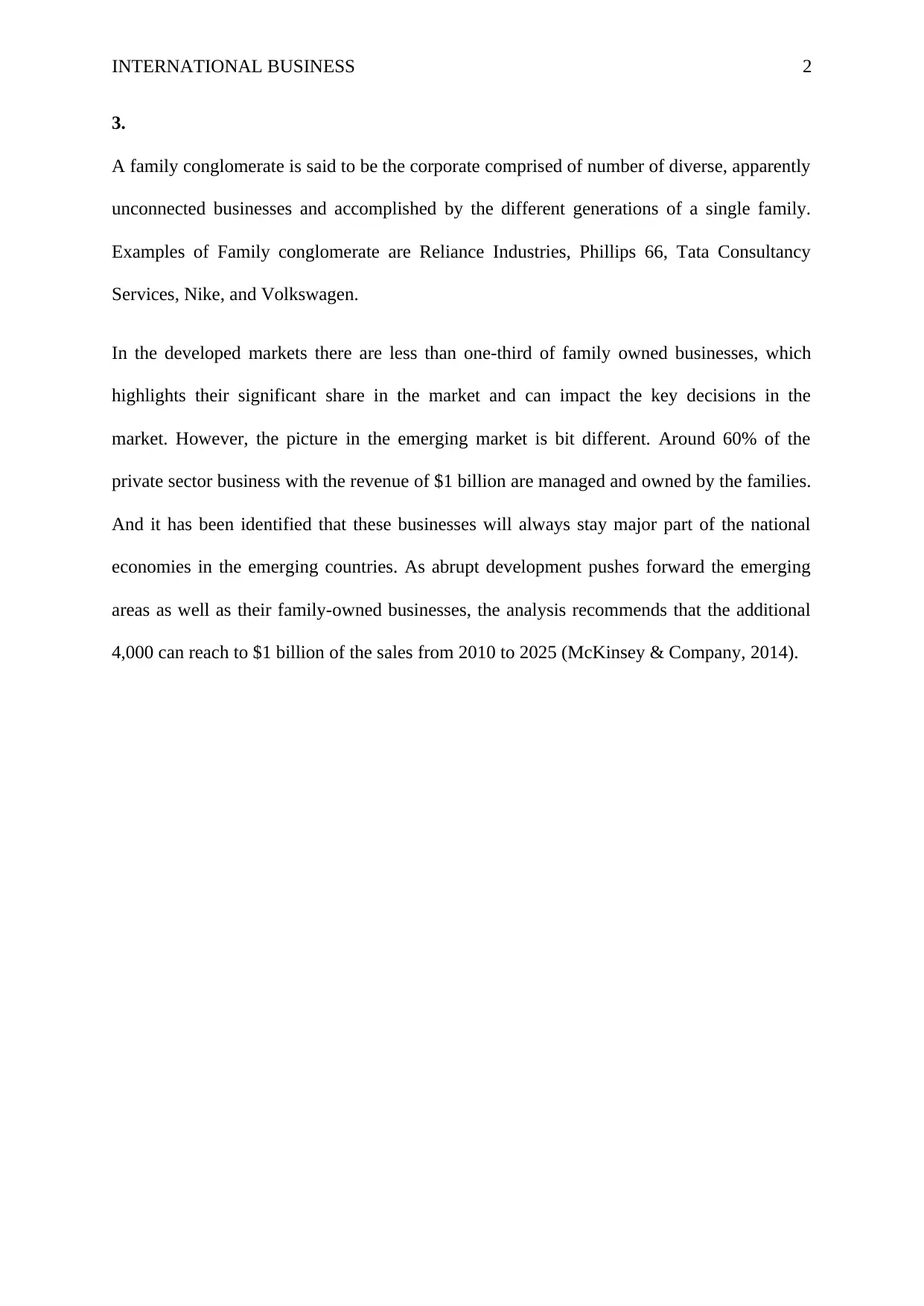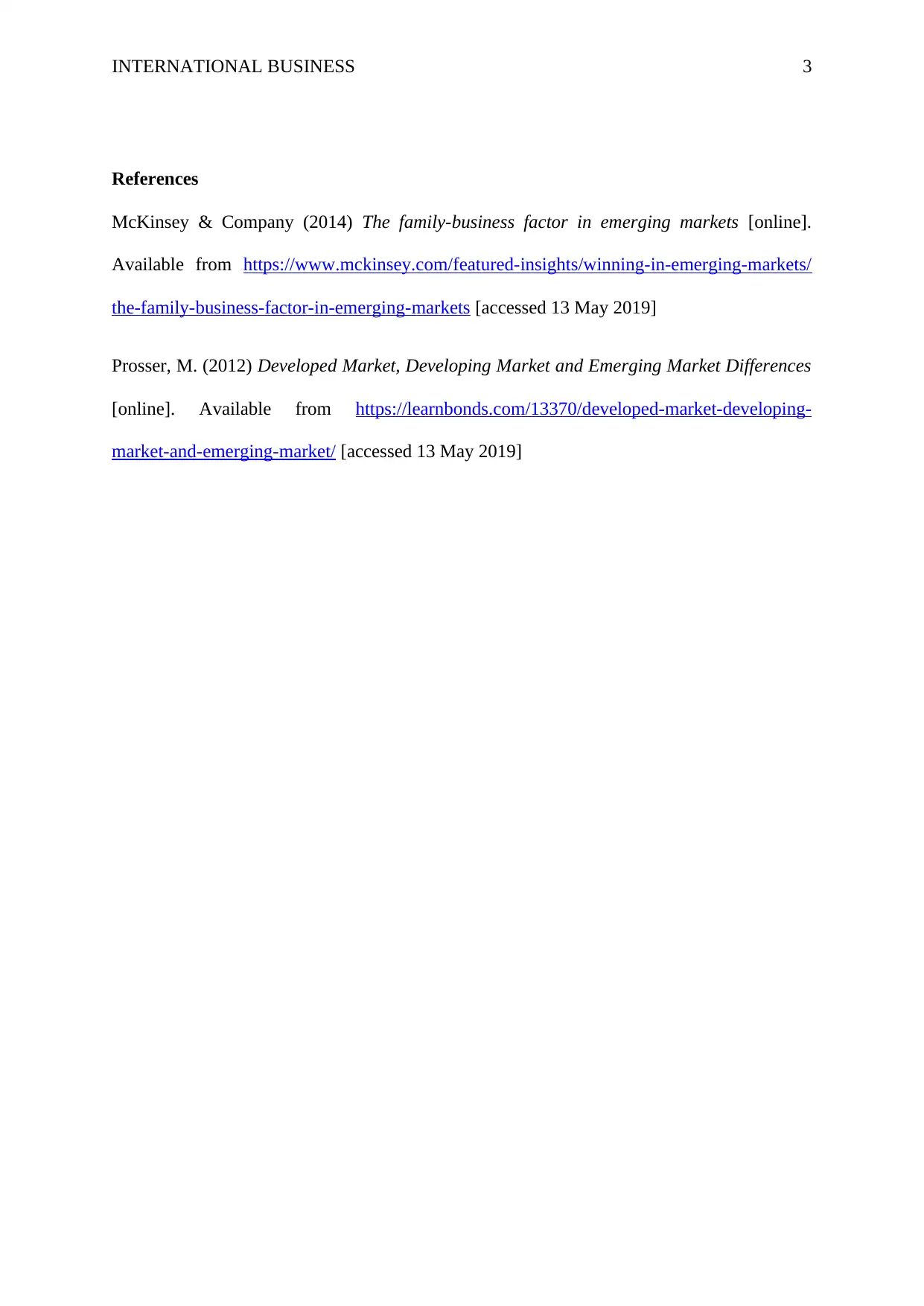International Business Report: Risks and Family Conglomerates
VerifiedAdded on 2023/03/21
|4
|481
|89
Report
AI Summary
This report analyzes key aspects of international business, focusing on the distinctions between advanced, developing, and emerging economies. It highlights the characteristics of each type, providing examples like Japan, China, and Mexico. The report also delves into the risks associated with emerging markets, particularly foreign exchange rate fluctuations and infrastructural challenges. Furthermore, it examines the role of family conglomerates in both developed and emerging markets, offering examples such as Reliance Industries and Volkswagen. The analysis emphasizes the significance of family-owned businesses in emerging economies and their potential for growth, referencing McKinsey & Company's research on the subject.
1 out of 4










![[object Object]](/_next/static/media/star-bottom.7253800d.svg)